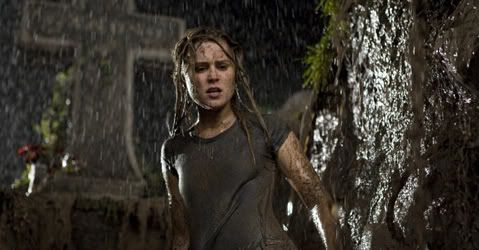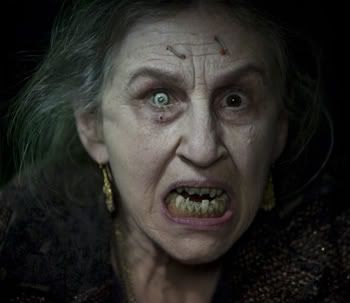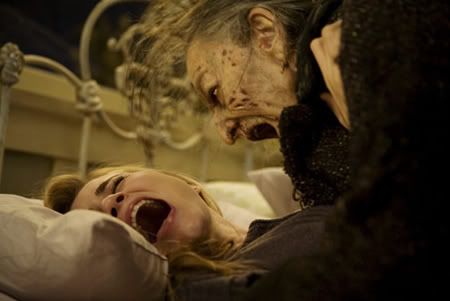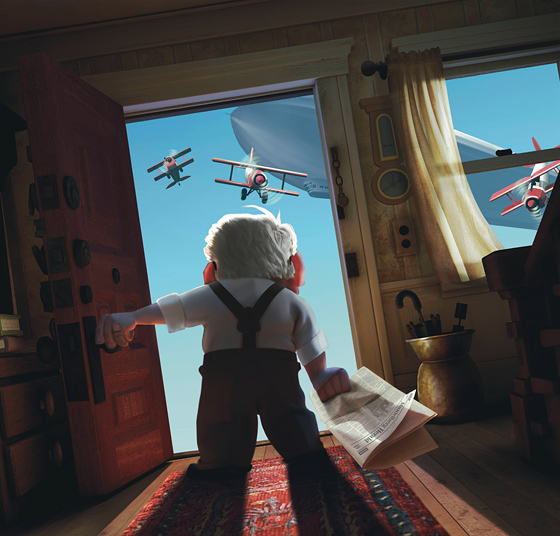Penayangan film box office Harry Potter telah memasuki musim keenam. Tahun ini, seri keenam Harry Potter dirilis bertepatan dengan liburan musim semi. Tidak heran, kemunculan film ini sangat dinanti para pecintanya yang kebanyakan anak-anak dan remaja.
 Harry Potter and the Half-Blood Prince masih mengisahkan petualangan tiga orang sahabat, Harry Potter (Daniel Radcliffe), Ron Weasley (Rupert Grint), dan Hermione Granger (Emma Watson). Ketiga sahabat yang telah beranjak remaja ini kembali harus melewati hari-hari mereka di tingkat enam di sekolah sihir Hogwarts.
Harry Potter and the Half-Blood Prince masih mengisahkan petualangan tiga orang sahabat, Harry Potter (Daniel Radcliffe), Ron Weasley (Rupert Grint), dan Hermione Granger (Emma Watson). Ketiga sahabat yang telah beranjak remaja ini kembali harus melewati hari-hari mereka di tingkat enam di sekolah sihir Hogwarts.
Kebangkitan penyihir hitam Lord Voldemort membuat para penyihir di Inggris was-was dan ketakutan. Pihak kementrian sihir pun kewalahan menghadapi aksi para Pelahap Maut (Death Eater) yang melakukan penyerangan secara brutal dan terang-terangan. Penyerangan tersebut membuat para muggle dapat merasakan keberadaan mereka.
Albus Dumbledore (Michael Gambon), kepala sekolah sihir Hogwarts, semakin berusaha melindungi Harry Potter dari kejaran Pelahap Maut. Ia juga meningkatkan penjagaan di Hogwarts dengan menempatkan banyak Auror di setiap sudut sekolah. Ia juga sedang dalam misi pencarian sesuatu yang menurutnya dapat digunakan untuk menghancurkan Voldemort.

Untuk menjalani misinya, Dumbledore mengandalkan Harry Potter untuk membantunya. Ia meminta Harry untuk menarik perhatian guru baru ilmu ramuan, Profesor Horace Slughorn (Jim Broadbent). Sesuatu di diri guru tersebut dapat digunakan untuk menjatuhkan Voldemort.
Di sisi lain, Draco Malfoy (Tom Felton) menghadapi keadaan yang sangat sulit. Dia mendapat tugas penting dari Lord Voldemort. Jika ia tidak bisa menjalankan tugasnya dengan baik, ia akan dibunuh. Narcissa Malfoy (Helen McCrory), ibu Draco, sangat ketakutan. Ia pergi menemui Severus Snape (Alan Rickman) untuk meminta bantuan. Bellatrix Lestrange (Helena Bonham Carter), adik Narcissa, memaksa Snape melakukan sumpah mati untuk menjaga Draco.

Petualangan Harry Potter dan Dumbledore dimulai saat mereka pergi ke sebuah tempat yang dikelilingi lautan luas untuk mencari harta berharga milik Voldemort. Harry Potter harus melawan rasa kemanusiaannya ketika dengan terpaksa memaksa Dumbledore meminum racun sampai habis—walaupun Dumbledore terus menangis kesakitan.
Sekembalinya di Hogwarts, Harry Potter mendapatkan kejutan besar ketika melihat Draco Malfoy mengacungkan tongkat sihirnya ke arah Dumbledore. Ia juga melihat Snape dan beberapa pelahap maut mengerumuni Dumbledore. Apa yang akan ia lakukan ketika melihat sosok idolanya terpojok?
Cinta Segitiga
Tahun sebelumnya, Harry Potter sempat mempunyai hubungan khusus dengan Cho Cang, murid dari asrama Ravenclaw. Namun, hubungan tersebut tidak berjalan mulus karena Cho masih terbayang-bayang kenangan Cedric Diggory, anak yang dibunuh Lord Voldemort pada saat turnamen Triwizard di tahun keempat.

Kali ini, Harry mencoba mendekati Ginny Weasley (Bonny Wright), adik perempuan sahabatnya, Ron. Beberapa kali Harry mencoba mendekati Ginny, namun ia menjaga jarak ketika mengetahui kalau Ginny memiliki kekasih, Dean Thomas (Alfred Enoch).
Kisak klasik antara Ron dan Hermione juga masih berlangsung. Ron yang tidak pernah menyadari kalau Hermione menyukainya, malah asyik bersenang-senang dengan Lavender Brown (Jessie Cave), fans sejatinya. Beberapa kali Hermione menangis kesal dan berusaha membalas dendam dengan mengencani Cormac McLaggen (Freddie Stroma). Apakah Ron dan Hermione berhasil menghentikan kesalahpahaman tersebut dan menyatukan hati mereka?
Semakin Dewasa
Seri-seri Harry Potter memang selalu menarik untuk ditunggu. Setiap tahun, cerita tentang penyihir berkacamata bulat ini mengalami perkembangan. Ketika Harry Potter beranjak dewasa, maka kisah dan pengalaman hidupnya pun semakin kompleks.Inilah yang terlihat pada Harry Potter seri keenam ini. Jika pada seri pertama sampai ketiga film ini masih diperuntukkan untuk anak-anak, seri keempat sampai keenam diperuntukkan untuk remaja. Seiring perkembangannya, film Harry Potter tidak lagi aman untuk anak-anak karena dianggap terlalu menakutkan karena terdapat adegan kekerasan, pembunuhan, dan konspirasi.
Dalam Harry Potter and the Half-Blood Prince, terdapat perbedaan yang cukup signifikan dari film-film sebelumnya. Karakter setiap tokohnya tergali lebih dalam. Di sini, kita dapat mendalami sifat masing-masing tokoh. Selain itu, sentuhan humor dan kisah percintaan juga cukup kental dalam film ini. Harry Potter, Ron Weasley, dan Hermione Granger tampil lebih “hidup” dan lebih “memiliki perasaan”.
Berita gembira untuk para penggila Harry Potter. Film yang resmi ditayangkan serempak di seluruh bioskop di Indonesia pada 16 Juli 2009 ini akan tampil dalam format IMAX 3D pada 29 Juli 2009. film dalam format IMAX 3D ini dapat Anda nikmati di studio-studio IMAX terdekat. Dengan begitu, Anda seakan langsung merasakan petualangan seru Harry Potter dan kawan-kawan melawan kekejian raja kegelapan Lord Voldemort.(LUQ)
Tanggal rilis: Kamis, 16 Juli 2009
Genre : adventure/mistery/romance/fantasy
Durasi : 153 menit
Sutradara : David Yates
Produser : David Hayman
Pemain : Daniel Radcliffe, Rupert Grint, Emma Watson, Michael Gambon, Alan Rickman, Tom Felton.
Produksi : Warner Bros Pictures





















 The new Disney/Pixar collaboration, Up, has just opened to some of the best reviews the studio’s ever received. While it’s a very enjoyable film, I have to say it certainly isn’t among their best, in spite of the talent behind it.
The new Disney/Pixar collaboration, Up, has just opened to some of the best reviews the studio’s ever received. While it’s a very enjoyable film, I have to say it certainly isn’t among their best, in spite of the talent behind it. Up was directed by Pete Docter (Monsters, Inc.) and Bob Peterson (who also wrote the screenplay). This is Docter’s second helming effort and Peterson’s first. While the duo capably steer the ship together, the script unfortunately hits several expected plot points, both before and after Carl and Russell reach Paradise Falls. There is also a little coda to the story which, while fitting in with the standard happy ending one comes to expect from a Disney film, feels just a bit too pat in this day and age, especially since the story bravely takes its time in the beginning to lay out the course of Carl and Ellie’s life together for better and worse, including the implied fact that at one point Ellie has a miscarriage while she and her husband are expecting a baby.
Up was directed by Pete Docter (Monsters, Inc.) and Bob Peterson (who also wrote the screenplay). This is Docter’s second helming effort and Peterson’s first. While the duo capably steer the ship together, the script unfortunately hits several expected plot points, both before and after Carl and Russell reach Paradise Falls. There is also a little coda to the story which, while fitting in with the standard happy ending one comes to expect from a Disney film, feels just a bit too pat in this day and age, especially since the story bravely takes its time in the beginning to lay out the course of Carl and Ellie’s life together for better and worse, including the implied fact that at one point Ellie has a miscarriage while she and her husband are expecting a baby.
 Red Cliff marks John Woo’s return to his Asian filmmaking roots following his stint in Hollywood, and with a budget of US$80 million, many have touted this as a blockbuster epic that Asians would be proud of, especially one coming from Woo. A dream project of his, Red Cliff undoubtedly garnered plenty of buzz since Day One, and its casting has been nothing short of a musical chairs game, with actors revolving in and out of the door, especially when Chow Yun-Fat and Tony Leung Chiu-Wai had announced their departure from the project, only for the latter to return to fill in Chow’s shoes, and Takeshi Kaneshiro to take over the void left by Leung.
Red Cliff marks John Woo’s return to his Asian filmmaking roots following his stint in Hollywood, and with a budget of US$80 million, many have touted this as a blockbuster epic that Asians would be proud of, especially one coming from Woo. A dream project of his, Red Cliff undoubtedly garnered plenty of buzz since Day One, and its casting has been nothing short of a musical chairs game, with actors revolving in and out of the door, especially when Chow Yun-Fat and Tony Leung Chiu-Wai had announced their departure from the project, only for the latter to return to fill in Chow’s shoes, and Takeshi Kaneshiro to take over the void left by Leung.

